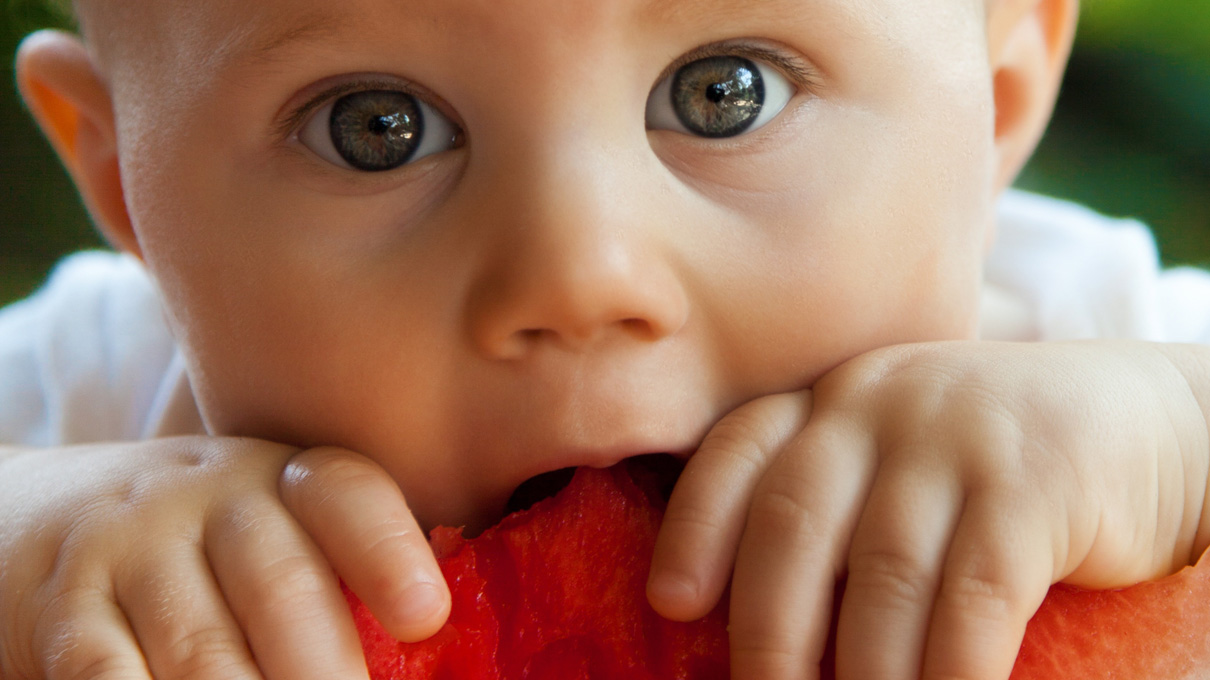

Baby led weaning
Counter to all the advice to start with purées and move on from there is a movement known as 'baby-led weaning', pioneered by infant feeding expert Gill Rapley. The theory is that your baby will follow its instincts and natural curiosity; this will encourage independence, help your baby develop hand-eye co-ordination and enable it to join you for family meals right from the start. Many parents do it inadvertently, usually with their second or third baby, when they are having to divide their attention, so their baby is more likely to get the chance to just pick up a piece of food and start chewing. Others go down this route simply because their baby refuses to eat from a spoon. You may find that some food from a spoon and lots of finger foods works for you.
The greatest downside to weaning this way is that, even though you may save time preparing puréed foods, you'll probably end up spending a lot more time clearing up after your baby -it's nothing if not messy!
How to do it
- Wait until your baby is six months old and able to sit up with little or no support.
- Sit your baby upright to eat.
- Keep up the usual milk feeds your baby will naturally but gradually consume less milk as he gains more nutrients from solids.
- Be patient. Give your baby time and space to eat at his/her own pace.
- Put food within easy reach, either on a plate at the table or on the high chair tray, so s/he's in control.
- Do sit and eat with your baby - s/he will copy what you're doing and family meals will be seen as normal and acceptable.
- Never leave your baby unattended while s/he's eating.
What to offer (or not)
- Foods that are about the size of a fat chip, or that have a 'handle', such as a broccoli spear, are easier for your baby to pick up. Make sure they are long enough for your baby to hold in his/her fist, and have a bit poking out to bite on. At six months s/he can't open his fist to get at the rest of the food, so s/he'll drop it and go on to something else.
- Foods should be soft enough for your baby to break up with his/her gums, but not so soft that they turn to mush when s/he grabs it.
- Start by offering three pieces of food, e.g. a broccoli floret, a carrot baton and a strip of meat, and just watch what s/he does with it. Don't worry if it doesn't get eaten or ends up on the floor. Do have some more to offer if s/he seems to like it.
- Don't offer food that's an obvious choking hazard (eg, whole cherry tomatoes, fruit with stones, nuts)
- Sticks of vegetables such as parsnips and carrots are good roasted as they will be easier to grip. If it's hard when raw, cook it. Veg that are softer, eg, cucumber, can be eaten raw.
- Fruit can be either cut into sticks or left whole. Leaving some skin on can make it easier to hold - if it's inedible your baby will learn to gnaw away at the flesh and leave the skin.
- Meat on the bone is good for gnawing at, but do make sure there are no small bones and no gristle.
- Toast can be easier to cope with than plain bread, or try pittas and chappatis.
- Breadsticks and rice cakes will go soft quickly in the mouth.
- Pasta without sauce is easier to hold.

